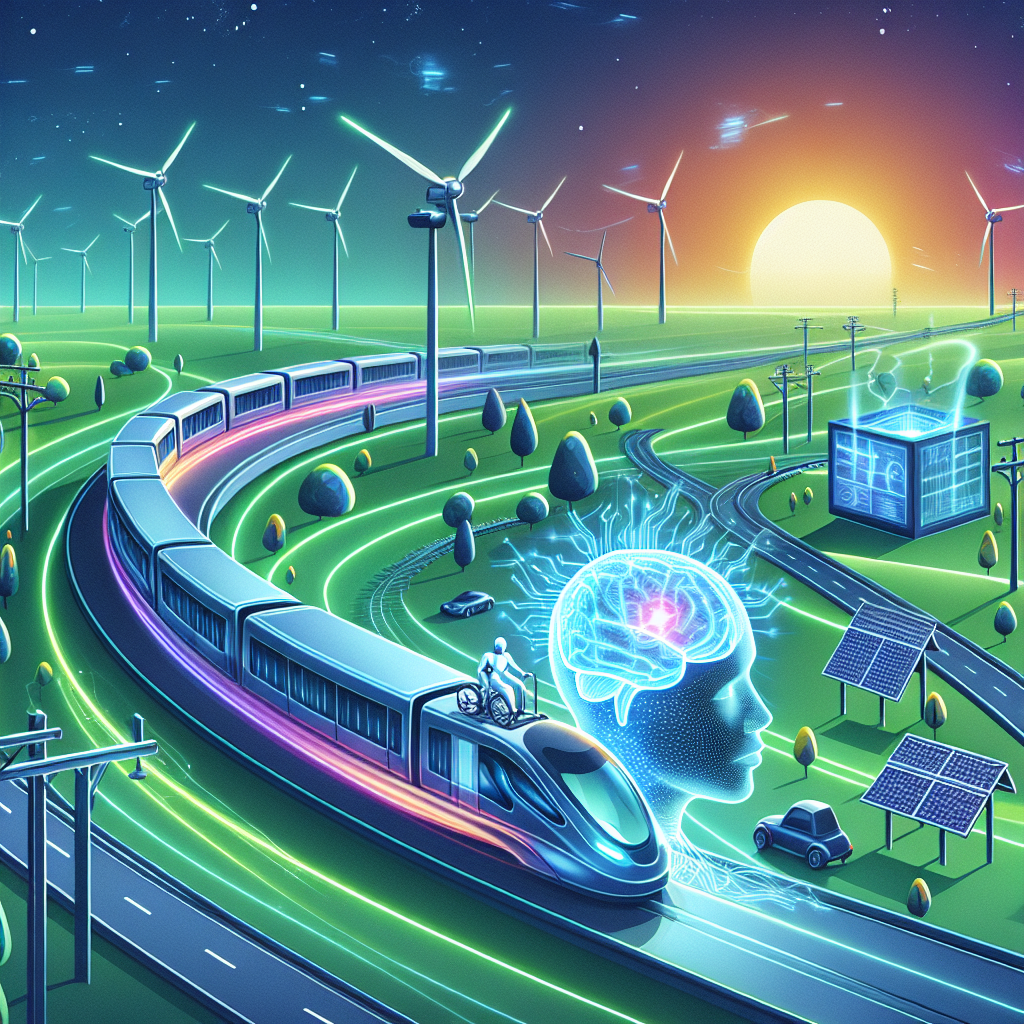AI-Powered Solutions for Improving Energy Efficiency in Renewable Transportation
Introduction
As the world continues to grapple with the effects of climate change and the depletion of fossil fuels, the need for renewable transportation solutions has become increasingly urgent. Renewable transportation refers to the use of alternative energy sources, such as solar, wind, and biofuels, to power vehicles and reduce greenhouse gas emissions. However, one of the challenges facing renewable transportation is the need to improve energy efficiency in order to maximize the benefits of these alternative energy sources.
Artificial intelligence (AI) has emerged as a powerful tool for improving energy efficiency in renewable transportation. By leveraging AI-powered solutions, transportation companies and governments can optimize energy consumption, reduce emissions, and lower operating costs. In this article, we will explore the various ways in which AI can be used to enhance energy efficiency in renewable transportation.
AI-Powered Solutions for Improving Energy Efficiency
1. Predictive Maintenance
One of the key ways in which AI can improve energy efficiency in renewable transportation is through predictive maintenance. By analyzing data from sensors and other sources, AI algorithms can predict when a vehicle or its components are likely to fail, allowing for proactive maintenance that can prevent costly breakdowns and reduce energy consumption. For example, AI-powered predictive maintenance can help identify when a battery in an electric vehicle is nearing the end of its lifespan, allowing for timely replacement and ensuring optimal performance.
2. Route Optimization
AI can also be used to optimize routes for renewable transportation vehicles, such as electric buses or delivery trucks. By analyzing traffic patterns, weather conditions, and other factors, AI algorithms can identify the most efficient routes for vehicles to take, minimizing energy consumption and reducing emissions. For example, AI-powered route optimization can help electric buses avoid congested areas and heavy traffic, allowing them to operate more efficiently and extend their range.
3. Energy Management
AI can play a crucial role in managing energy consumption in renewable transportation vehicles. By monitoring factors such as battery charge levels, driving behavior, and environmental conditions, AI algorithms can optimize energy usage and extend the range of electric vehicles. For example, AI-powered energy management systems can adjust the speed and acceleration of a vehicle based on real-time data, ensuring that energy is used efficiently and effectively.
4. Vehicle Design
AI can also be used to optimize the design of renewable transportation vehicles for maximum energy efficiency. By simulating different design configurations and materials, AI algorithms can identify the most efficient and sustainable options for vehicles, such as electric cars or buses. For example, AI-powered design tools can help manufacturers create vehicles that are lighter, more aerodynamic, and have better energy storage capabilities, leading to improved performance and reduced energy consumption.
5. Smart Charging
AI-powered solutions can also improve energy efficiency in renewable transportation through smart charging technology. By analyzing data on energy demand, grid capacity, and charging patterns, AI algorithms can optimize the charging process for electric vehicles, ensuring that they are charged at the most cost-effective and environmentally friendly times. For example, AI-powered smart charging systems can schedule charging sessions during off-peak hours when electricity prices are lower, reducing costs for both consumers and utility companies.
FAQs
Q: How can AI help reduce emissions in renewable transportation?
A: AI can reduce emissions in renewable transportation by optimizing energy consumption, improving route efficiency, and managing vehicle design to minimize environmental impact.
Q: What are the benefits of using AI-powered solutions in renewable transportation?
A: The benefits of using AI-powered solutions in renewable transportation include increased energy efficiency, reduced operating costs, improved performance, and lower emissions.
Q: How can predictive maintenance help improve energy efficiency in renewable transportation?
A: Predictive maintenance can help improve energy efficiency in renewable transportation by identifying potential issues before they occur, allowing for proactive maintenance that can prevent costly breakdowns and reduce energy consumption.
Q: What role does AI play in optimizing energy management in renewable transportation vehicles?
A: AI plays a crucial role in optimizing energy management in renewable transportation vehicles by monitoring factors such as battery charge levels, driving behavior, and environmental conditions to ensure that energy is used efficiently and effectively.
Conclusion
AI-powered solutions have the potential to revolutionize renewable transportation by improving energy efficiency, reducing emissions, and lowering operating costs. By leveraging AI algorithms for predictive maintenance, route optimization, energy management, vehicle design, and smart charging, transportation companies and governments can maximize the benefits of alternative energy sources and accelerate the transition to a sustainable transportation system. With continued advancements in AI technology and collaboration between industry stakeholders, the future of renewable transportation looks brighter than ever.

